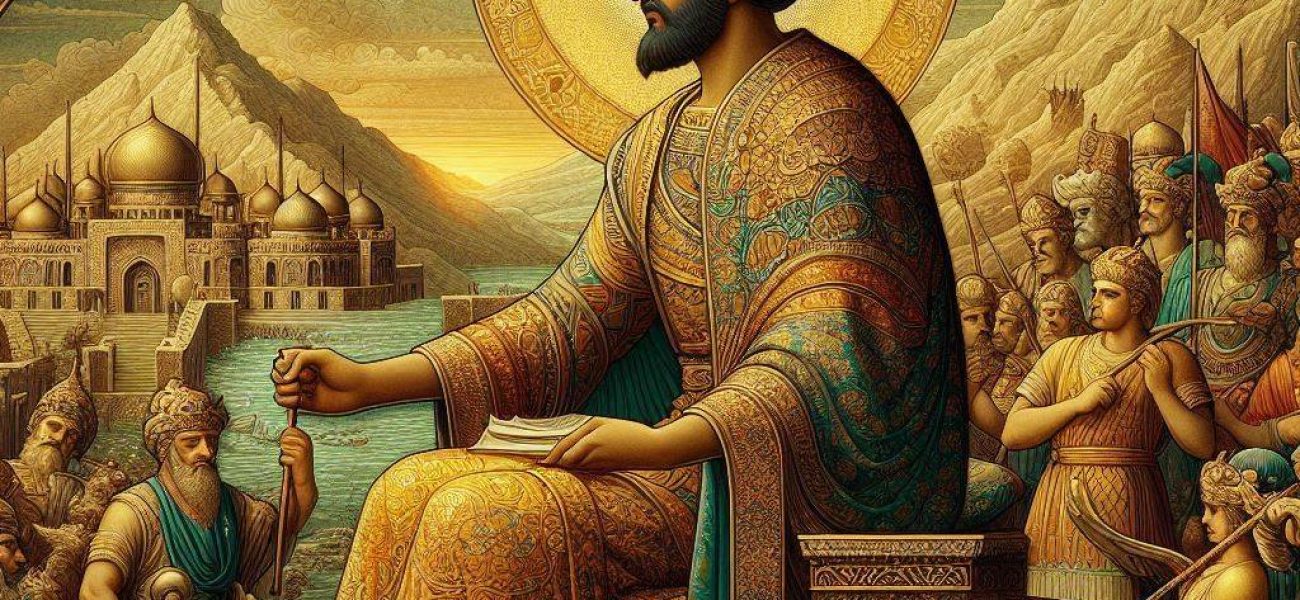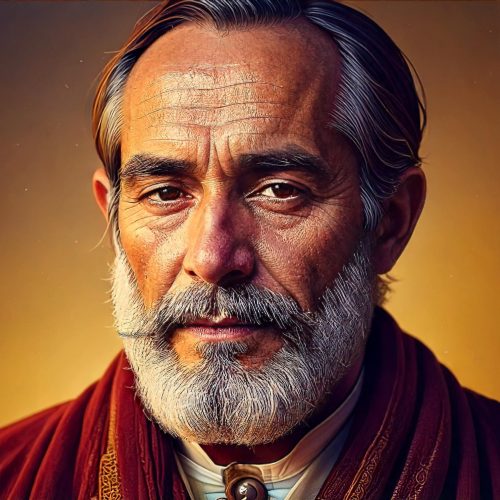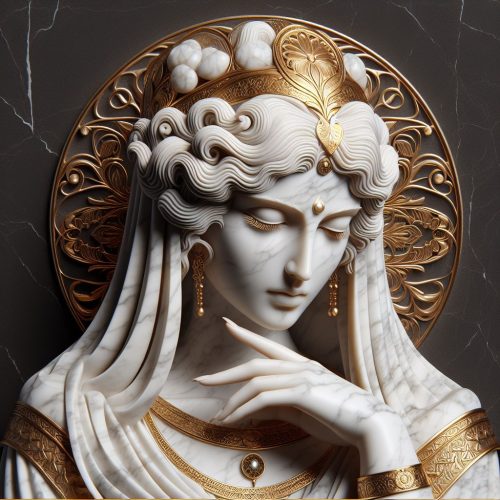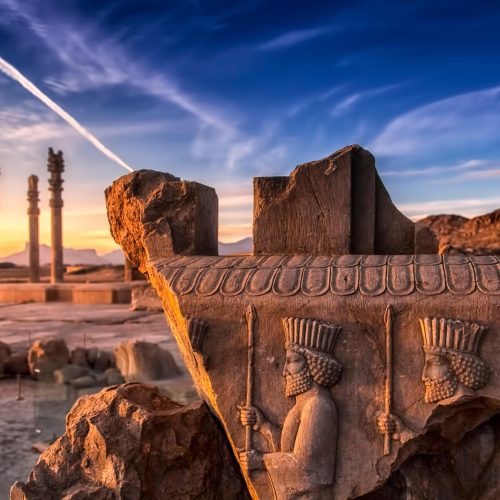By Dr. Farhad Daryaee, Professor of Iranian Studies, University of Tehran
In the annals of our illustrious Persian history, there are names that shine like the sun at its zenith, casting long shadows across the centuries. Yet, there are others, no less worthy of remembrance, who have been consigned to the penumbra of time’s relentless march. It is to one such figure that we must now turn our gaze, gentle reader, for in the story of Wadfradad III, we find a mirror that reflects not only the glories and tribulations of our ancient land but also the very essence of what it means to rule in times of tumult and uncertainty.
Let us cast our minds back, if you will, to the twilight years of the Arsacid dynasty, when the mighty Parthian Empire, which had stood as a bulwark against Roman ambition for nigh on four centuries, began to show the first signs of its impending dissolution. It was in this crucible of change that our protagonist, Wadfradad III, emerged to play his part upon the grand stage of history.
Born into the noble house of Hyrcania, a region famed for its fierce warriors and untamed wilderness, young Wadfradad came of age in a world where the old certainties were crumbling like sand castles before the inexorable tide. The great kings of the Arsacid line, once revered as living gods, now found their authority challenged not only by external foes but by the very satraps and nobles who had once been the bedrock of their power.
It was in this climate of instability that Wadfradad ascended to the throne of Hyrcania, taking up the mantle of leadership that had been worn by his forebears for generations uncounted. Yet, dear reader, let us not be so hasty as to imagine that this transition was a smooth one, for in those days, as indeed in our own, power was a prize fiercely contested and rarely relinquished without a struggle.
The chronicles tell us, in their fragmentary and oft-contradictory way, that Wadfradad’s claim to rule was challenged by no less than three of his kinsmen, each believing themselves more worthy of the crown. What followed was a period of internecine conflict that saw brother pitted against brother, cousin against cousin, in a dance of swords and stratagems that would have brought a wry smile to the lips of Ahriman himself.
For two long years, the fate of Hyrcania hung in the balance, with first one claimant and then another seeming to gain the upper hand. Villages were put to the torch, ancient fortresses changed hands with dizzying regularity, and the common folk, as is ever their lot in such times, suffered grievously. Yet through it all, Wadfradad demonstrated a resilience and cunning that would serve him well in the trials to come.
It was, we are told, on the eve of what promised to be a decisive battle that Wadfradad showed the true measure of his wisdom. Rather than risk all on the uncertain outcome of arms, he convened a great council of the nobles and elders of Hyrcania. There, beneath the vaulted ceilings of the ancient fire temple at Zadracarta, he laid before his rivals and supporters alike a vision of a unified realm, strong enough to weather the storms that even then were gathering on the horizon.
With eloquence that would have done credit to Jamshid himself, Wadfradad spoke of the need for unity in the face of external threats, of the prosperity that peace would bring to all, and of the glory that awaited Hyrcania if only its people could set aside their differences and work towards a common purpose. Such was the power of his words, the sincerity of his conviction, that even his most implacable foes found themselves nodding in agreement.
As the new day dawned, Wadfradad emerged not merely as the ruler of Hyrcania by right of birth, but as a leader chosen by acclamation, his authority cemented by the very process that had sought to challenge it. It was a masterful display of statecraft, one that would set the tone for his reign and earn him a place among the most celebrated rulers of his age.
Yet, gentle reader, let us not fall into the trap of imagining that Wadfradad’s troubles ended with his consolidation of power in Hyrcania. For even as he worked to heal the wounds of civil strife and set his house in order, greater challenges loomed on the horizon. The Arsacid Empire, of which Hyrcania was but one jewel in a vast and varied crown, was entering its final death throes.
To the south and west, the ambitious Ardashir, scion of the house of Sasan, was gathering strength, his dreams of empire fueled by a potent mixture of religious zeal and political acumen. To the north, the nomadic tribes of the steppes watched with predatory interest, ever ready to swoop down upon the settled lands at the first sign of weakness. And always, like a storm cloud on the distant horizon, there loomed the specter of Rome, eternal enemy of all who would claim the mantle of Persian greatness.
It was in this maelstrom of competing interests and shifting alliances that Wadfradad III truly came into his own. Recognizing that Hyrcania alone could not hope to stand against the tides of change that were sweeping across the Iranian plateau, he embarked upon a bold campaign of diplomacy and strategic maneuvering that would see his influence extend far beyond the borders of his ancestral lands.
Through a combination of astute marriages, generous gifts, and when necessary, displays of military prowess, Wadfradad gradually built a network of alliances that stretched from the shores of the Caspian Sea to the mountain fastnesses of Parthia proper. He became, in effect, the power behind the throne of the declining Arsacid monarchy, propping up the last of that once-great dynasty even as he prepared for the inevitable day when a new order would need to be established.
It is perhaps in this role, as the architect of transition, that Wadfradad III’s true genius becomes most apparent. For while lesser men might have grasped blindly for the crown of the Great King, heedless of the cost, our Hyrcanian ruler understood that true power lay not in titles or trappings, but in the ability to shape events to one’s advantage.
Thus it was that when Ardashir of Fars finally made his move, overthrowing the last Arsacid king and proclaiming himself Shahanshah, Wadfradad was prepared. Rather than opposing the rise of the Sasanian dynasty directly, a course which would have surely led to his downfall, he instead positioned himself as a valuable ally to the new regime.
Through careful negotiation and a judicious mix of submission and assertion of local autonomy, Wadfradad managed to preserve much of Hyrcania’s independence while simultaneously integrating it into the new imperial structure. It was a delicate balancing act, one that required all of his considerable diplomatic skills and not a small measure of personal courage.
For make no mistake, dear reader, the early years of Sasanian rule were fraught with danger for those who had held power under the old order. Many of Wadfradad’s peers, unable or unwilling to adapt to the new realities, found themselves stripped of their lands and titles, or worse. Yet our Hyrcanian prince navigated these treacherous waters with a skill that would have done credit to the most seasoned mariner.
It is said that Ardashir himself, no mean judge of character, once remarked that if he had but ten men like Wadfradad, he could rule not just Iran, but the entire known world. Whether this tale be apocryphal or not, it speaks to the high esteem in which the Hyrcanian ruler was held, even by those who might have viewed him as a potential threat.
As the years passed and the Sasanian Empire began to take shape, Wadfradad’s influence only grew. He became a trusted advisor to Ardashir and later to his son, Shapur I, his counsel sought on matters ranging from military strategy to the governance of the eastern provinces. Yet never did he lose sight of his primary responsibility: the welfare and prosperity of his own people.
Under Wadfradad’s steady hand, Hyrcania flourished as never before. Trade routes were established and protected, bringing wealth and new ideas from lands as far-flung as China and India. The great cities of the region, Zadracarta chief among them, were expanded and beautified, their markets teeming with goods from every corner of the known world. Temples and fire altars were restored and endowed, ensuring that the sacred flames of Ahura Mazda burned bright in every village and town.
But perhaps the greatest testament to Wadfradad’s legacy lies not in grand monuments or military conquests, but in the lives of the common folk who lived under his rule. For it is said that during his time, no honest man went hungry in Hyrcania, no child lacked for education, and no woman feared to walk alone, even in the darkest hours of the night. Such was the peace and prosperity that he brought to his land.
As we draw near to the close of our tale, gentle reader, it behooves us to reflect upon the lessons that the life of Wadfradad III holds for us in these latter days. In a world where the clash of empires and ideologies threatens once again to engulf our beloved Iran, we would do well to remember the wisdom of this forgotten ruler.
For Wadfradad understood, as few leaders before or since have done, that true strength lies not in the ability to dominate others, but in the capacity to adapt, to build bridges where others would erect walls, and to find common ground even with those who might be considered enemies. He showed us that it is possible to remain true to one’s principles and heritage while still embracing change, and that the surest path to lasting power is through the hearts and minds of the people one serves.
As the sun sets on our exploration of this remarkable figure, let us carry with us the light of his example. For in the story of Wadfradad III, we find not just a tale of ancient glories, but a roadmap for navigating the complexities of our own turbulent times. May his wisdom guide us, his courage inspire us, and his vision of a prosperous and united Iran continue to illuminate our path forward.
And so, dear reader, we come to the end of our journey through the life and times of Wadfradad III, ruler of Hyrcania, kingmaker of empires, and exemplar of Persian statecraft. Though the sands of time may have conspired to obscure his name, it is my fervent hope that through this humble telling, his memory may once again shine bright in the annals of our glorious history. For as long as there are those who remember and honor the best of our past, the spirit of Iran, like the eternal flame of Ahura Mazda, shall never be extinguished.




